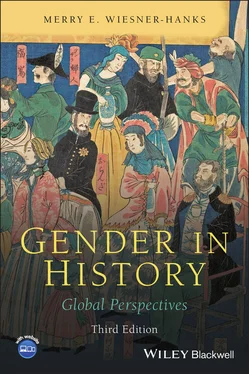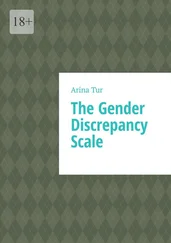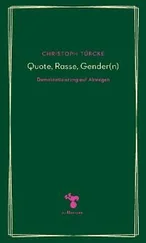Women’s lack of legal status as persons was actually a common feature in many of the world’s written law codes, which have sometimes regarded women as a form of property. In most cultures until the nineteenth or twentieth century (or until today), marriage explicitly established a relationship of husbandly authority and wifely obedience. This relationship was often enshrined or symbolized in wedding ceremonies in which the wife vowed to obey her husband, or put a body part such as a hand, foot, or head, under the husband’s foot or within his hands. In many areas, a married woman was generally legally subject to her husband in all things; she could not sue, make contracts, or go to court for any reason without his approval. In Europe and European colonies, this principle was supported by the Christian view of marriage as a union through which husband and wife became “one flesh.” In England and later in the British Empire (and after the American Revolution, the United States) this legal doctrine was known as “coverture,” a word derived from the idea that a married woman’s legal identity was “covered” by that of her husband. All goods or property that a wife brought into a marriage – termed her dowry – and all wages she earned during the marriage were considered the property of her husband. Only when women’s rights activists in the nineteenth century campaigned for them were married women’s property acts gradually enacted, allowing married women to control property, inherit, write wills, and keep their earnings. In the United States, the last laws giving a husband control over all family property – what were known as “head and master laws” – were repealed in Louisiana only in 1979, after they had been ruled unconstitutional by the Supreme Court, and only in 1981 were laws passed in France that allowed a married woman to sell any of her own property without her husband’s permission.
Ideologies of Egalitarianism
Norms and laws that restricted women’s activities or placed them in a position subservient to men were numbingly common throughout the world, which can make studying women’s or gender history often seem quite depressing. Along with individuals and groups that ignored or overcame these restrictions through their actions, however, there have also been many that developed ideas supporting greater gender egalitarianism or otherwise enhancing the situation of women; since the mid-nineteenth century, these ideas have slowly been translated into legal changes. Such ideashave generally been labeled “feminism,” a word developed first in French in the 1890s, though there are great disagreements about the limits, meaning, and implications of this word. Some advocates of women’s rights have used and continue to use other words to describe themselves, such as “womanist” or “mujerista,” while others note that feminism should always be used in the plural to emphasize its diversity.
Individuals and groups have challenged or rejected gender hierarchies for centuries. In Europe, Christine be Pizan (1364–1430), a well-educated Italian woman, wrote The Book of the City of Ladies in 1402, the first extended defense of women by a female author. Because her work challenged misogyny and extolled the achievements of women, Christine is often termed the “first feminist,” but she was soon followed by others. The Venetian poet Modesta Pozzo (1555–1592), writing under the pen name Moderata Fonte (“moderate fountain”), produced The Merits of Women: Wherein Is Revealed Their Nobility and Their Superiority to Men (first published 1600), the main point of which is captured in the title. In The Equality of Men and Women (1622), Marie le Jars de Gournay, the protégée of the French writer Michel de Montaigne and editor of his works, built on the arguments of Christine de Pizan to argue that the equality of men and women rested on divine law. In the seventeenth century, English women petitioned Parliament, arguing that they had an “equal interest with the men of this Nation” in the “good Laws of this Land.” In the late eighteenth century, women extended language about the rights of man that had been proclaimed in the American and French Revolutions to women. The English writer Mary Wollstonecraft asserted in 1792, “Let woman share the rights and she will emulate the virtues of man; for she must grow more perfect when emancipated.” 2
Women in some Native American groups already had political rights and responsibilities in the eighteenth century that European women sought to gain. In North America, Cherokee governing councils included women, as did those of other tribes. Cherokee women were part of the diplomatic missions sent to negotiate with Europeans and after the American Revolution with Americans. They were surprised to see no women among the Euro-American negotiators, and occasionally asked about this, or admonished them: “Let your Women hear our Words.” 3
Much early research within women’s history involved finding and celebrating “feminist foremothers.” The works of women such as Christine de Pizan and Mary Wollstonecraft were reissued and translated, and the writings of other feminists – most, though not all, of them women – were discovered and analyzed. These investigations generally focused first on white European or American women whose ideas led directly to the nineteenth-century women’s rights movements, but by the 1980s research into pioneering advocates of women had broadened to include Buddhist and Catholic nuns, female Native American tribal leaders, Quaker missionaries, Black schoolteachers, and many other types of individuals and groups. White European feminism was also increasingly recognized as diverse: nineteenth-century English (and American) feminists emphasized equality of individual rights, while continental Europeans emphasized the equally important responsibilities of women and men. Socialist feminists focused on working conditions and class inequalities, while middle-class feminists called for expanded education and financial independence.
In both the past and the present, feminists have often been involved with other movements advocating social change, such as abolitionism, anticolonialism, or the civil rights movement, and have developed very diverse ideas about the intersection among their various aims. (For more on modern women’s rights movements, and women’s actions in reform and revolutionary movements, see Chapter 8.) The variety within both historical and contemporary feminism makes it a difficult word to define to everyone’s satisfaction, with the ideas of some types of feminists regarded by others as not especially positive for women. Some ecofeminists, for example, view women as more caring and environmentally conscious because they have the possibility of motherhood, while others see such ideas as dangerously close to the old notion that “biology is destiny,” which has often been harmful to women. The diversity within feminism has allowed its opponents to highlight the ideas and activities of more flamboyant groups, such as those women who allegedly burned their bras at a Miss America competition, in their criticisms. (This story was, in fact, invented by a reporter, but it has had a very long life.) Such characterizations have led some who oppose gender inequity to reject the label feminist while still advocating women’s rights, a position expressed in the phrase “I’m not a feminist, but . . .”
Feminism has also continued to change. The 1990s brought “third-wave” feminism, a word coined by the American writer Rebecca Walker (1969–) to describe the feminism of her own generation, which incorporated new currents. As part of their emphasis on women’s power to shape their own lives and the culture around them, third-wave feminists have reclaimed derogatory words for women. Riot grrrl punk bands and grrlzines, important parts of third-wave feminism, supported women’s music, art, and sexual expression. The editors of Bitch magazine, which began publication in 1996, provided (and continue to provide) feminist analysis of pop culture. At the time, some feminists wondered whether “girl” and “bitch” were not best left unreclaimed, but 20 years later in the 2017 Women’s March over seven million women around the world donned pink “pussy” hats, the name taken from the resemblance of the top corners of the hats to cat ears, and in reference to recently-elected US president Donald Trump’s widely reported 2005 remarks that because he was a “star,” women would let him “grab’em by the pussy.” It was the largest single-day protest in the history of the United States and perhaps the world. Third-wave feminism has emphasized intersectionality and diversity, with calls to “decolonize feminism,” and increasing attention to the ideas and actions of African, Asian, Latin American, Caribbean, and Indigenous feminists, as well as those of nonwhite populations within North America, Australia, and Europe.
Читать дальше












